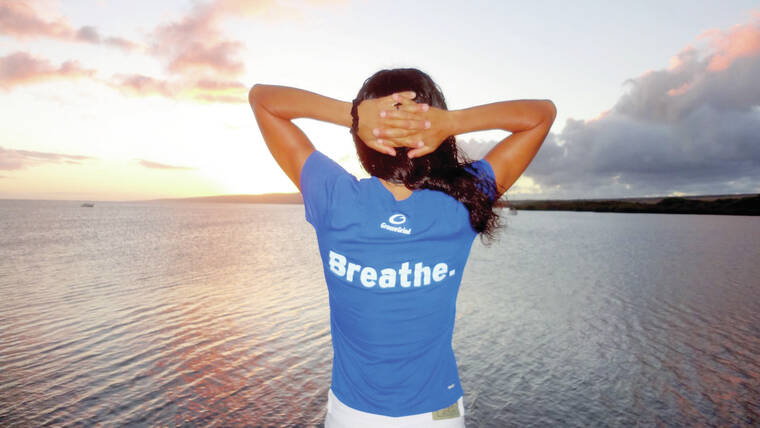Almost everyone is seeking to relax their mind and body from all of the fast and stressful life events that surround us. Although we can change our state with just a single deep breath. Yes, even one breath can help us to relax.
Breathing is a very simple tool, and of course it’s completely free, but most of us don’t know how to manipulate and use it. Learning and understanding our breathing patterns can help improve mental and physical health tremendously. Even if you practice a conscious breathing practice for just a few minutes a day you can improve your emotions, behavior and cognitive functions too.
Did you ever notice that when you are stressed or sad your breathing pattern changes? Most likely you will start to shorten your breath, and you might start breathing faster too. Probably you will start using your upper chest muscles, rather than your diaphragm. And all of this combined will actually increase the tension even more. On the other hand, when you relax or are happy your breathing slows down and becomes deeper, and most likely you are using your diaphragm.
Did you know that regularly taking short breaths, and chronic chest breathing, could actually be affecting your sleep, it may increase your risk of cardiovascular disease and muscle tension, it can promote anxiety and lead to a decline in cognitive function. There is actually a condition called “dyspnea” which is a shortness of breath that is linked to heart failure, lung disease and asthma.
Try this: just take a few breaths, without trying to change your natural pattern of breathing, but try to be conscious of your breath.
You will feel an immediate relaxing effect. Actually, if you can try a few minutes of breathing practice lying down in a quiet room you may find that every couple of minutes you subconsciously take a deep breath, without forcing it.
Try one more thing: take a deep breath in and out with your mouth open, and then take another deep breath using only nasal breathing, with your mouth closed. Which one enabled you to take a deeper breath? Without using diaphragmatic breathing we can not increase ventilation, but nasal breathing can help us find better sleep, improve our metabolism, and reduce stress and anxiety.
Of course, we inhale air because our body needs oxygen for metabolism. When we utilize that oxygen through the aerobic metabolic process we start to produce carbon dioxide, so we have to breathe out again to get rid of the excess air but especially the carbon dioxide that we produce, because this affects the acid base balance of the blood (Ph). All living cells are very sensitive to Ph balance, especially brain cells. The breathing process may seem simple but it involves a complex neural control system.
Here are a few tips for how we can improve our breathing pattern:
• Practice conscious (mindful) breathing. Just invest however much time you want, focus on slow diaphragmatic breathing and if possible breathing in and out only through the nose. You can start even with just one minute a day.
• After a few minutes of focusing on your breath, try to hold your breath. Maybe just 20 to 30 seconds, don’t force it. Then start to breathe normally again, and after a few minutes repeat the breath hold.
• High intensity activities such as Tabata training — very high intensity intervals of only 20 seconds, followed by a short rest of around 10 seconds, repeating around 8 times — will have profound benefits on motor and cognitive function as well as improve cardiovascular health, and improve mitochondria which will increase energy too.
• You can also try box breathing, also known as square breathing. Inhale for 5 seconds, hold for 5 seconds, then exhale our again for 5 seconds. You can change the duration however you like, maybe you start with less than 5 seconds and work your way up to 10 seconds or longer, just make sure that each interval —in, hold, out — is the same length. You can start with just a few minutes a day, and see how you feel.
We are actually really complete, we have everything that we need in our body and mind. Before we start to look outside for solutions we should first take our time to look inside. Give yourself a gift and start practicing the most powerful healing tool — just breathe!
References:
• Breathing matters https://pubmed.ncbi.nlm.nih.gov/29740175/
• Breathing Rhythm and Pattern and Their Influence on Emotion https://pubmed.ncbi.nlm.nih.gov/35259917/
• Jack L. Feldman, Ph.D. https://bioscience.ucla.edu/people/jack-feldman/
• Shortness of Breath (Dyspnea) https://my.clevelandclinic.org/health/symptoms/16942-shortness-of-breath-dyspnea
• Learning diaphragmatic breathing https://www.health.harvard.edu/healthbeat/learning-diaphragmatic-breathing
• Five Ways You Might Be Breathing Wrong https://www.lung.org/blog/you-might-be-breathing-wrong
• Breathing Exercises https://www.lung.org/lung-health-diseases/wellness/breathing-exercises
• Shortness of Breath https://foundation.chestnet.org/lung-health-a-z/shortness-of-breath/
• What Is Box Breathing? https://www.webmd.com/balance/what-is-box-breathing
•••
Ayda Ersoy is a nutritionist (Dip.C.N., Dip.S.N.); master trainer (CPT ACE, NCSF, CanfitPro); registered yoga teacher; founder, Health Angel Nutrition, Fitness and Wellness; and founder, SMS (Stability, Mobility Strength) Intuitive Training System.


